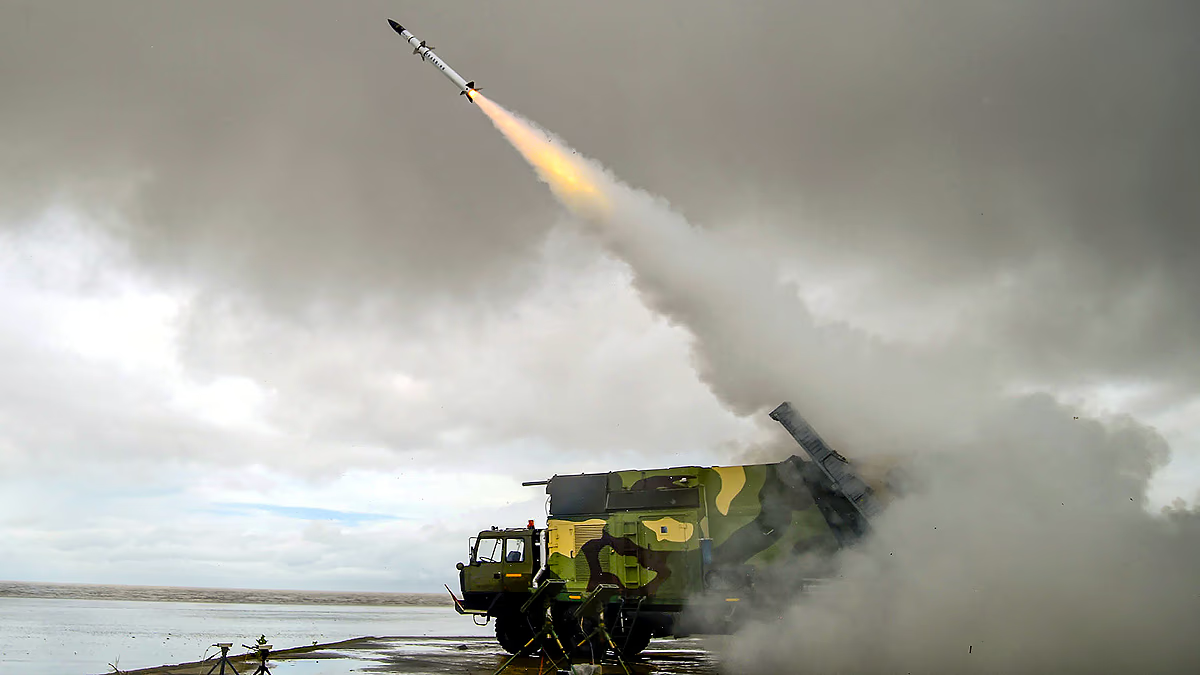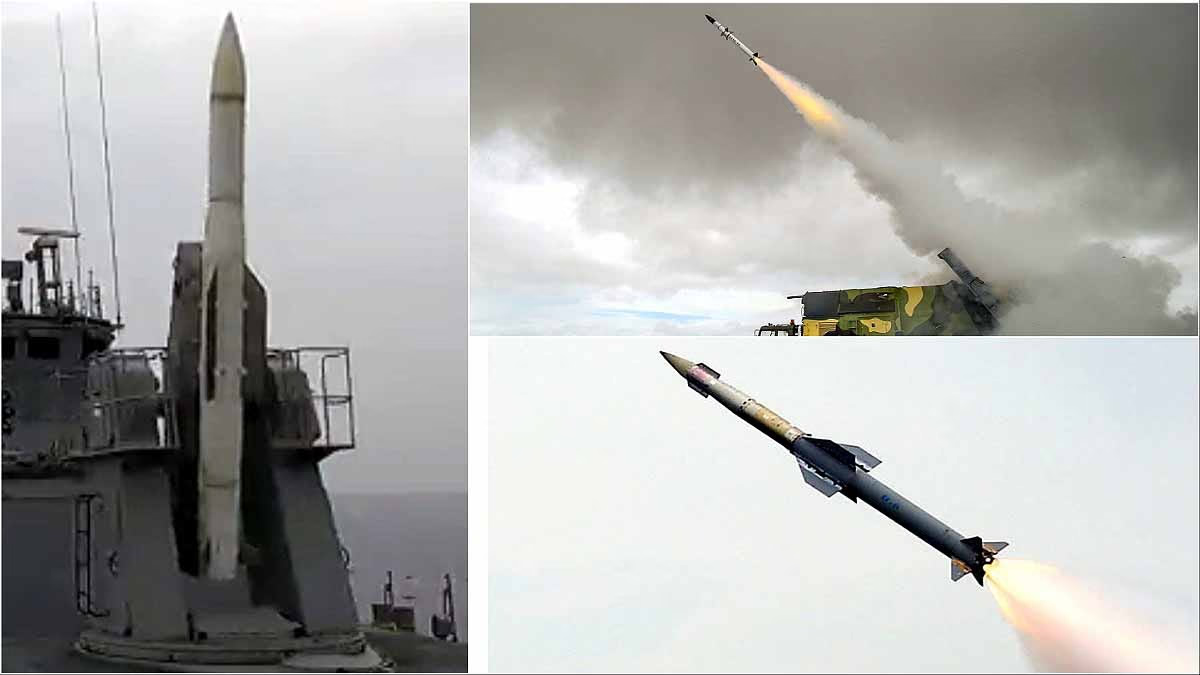During Operation Sindoor, the Indian Air Force (IAF) and the Army's integrated air defense mechanism effectively neutralized Pakistani drone and missile attacks. This success propelled India's efforts to bolster its air defense capabilities further.
Following Project Kusha, India plans to integrate three new indigenous systems into its multi-layered air defense network—the QR-SAM (Quick Reaction Surface-to-Air Missile), VL-SRSAM (Vertically Launched Short-Range Surface-to-Air Missile), and Akash-NG (Next Generation).
The India-Pakistan Clash and the Role of Air Defense
On the night of May 7-8, 2025, Pakistan launched drone and missile attacks on 15 Indian military bases like Srinagar, Pathankot, Jammu, Amritsar, and Bhuj. This attack was in response to India’s Operation Sindoor, where precision strikes were carried out on nine terror hubs in Pakistan and Pakistan-occupied Kashmir (PoK).
The Indian air defense system, comprising the S-400, Akash, Barak-8, and an integrated counter-UAV grid (C-UAS), destroyed over 25 Pakistani drones and missiles. In retaliation, India's forces decimated Pakistan's air defense apparatus in Lahore.
The clash underscored the necessity of tackling low-level aerial threats like drones and cruise missiles. Thus, India is emphasizing low- and medium-level systems such as QR-SAM, VL-SRSAM, and Akash-NG, all fully indigenous.
Project Kusha: The Long-Range Foundation
Project Kusha is a long-range surface-to-air missile (LR-SAM) system developed by DRDO, boasting a range of up to 350 km and expected to be deployed by 2028-29. It aims to offer an indigenous substitute for the Russian S-400.
Kusha provides India’s multi-layered air defense system with an outer shield to focus medium- and low-level systems on smaller, imminent threats.
Next, India's priority is the assimilation of QR-SAM, VL-SRSAM, and Akash-NG to counter low-level threats like drones, loitering munitions, and cruise missiles—emerging as prominent challenges in recent clashes.
New Air Defense Systems
1. QR-SAM (Quick Reaction Surface-to-Air Missile)
Range:
25-30 km
Features:
Developed by DRDO, QR-SAM is a swift-response system designed to intercept low-level airborne threats, including drones, cruise missiles, and fighter aircraft. Its radar offers 360-degree coverage and is equipped with a fully automated command and control system.
Recent Developments:
QR-SAM completed several successful tests in 2024, demonstrating the ability to neutralize drone swarms. This system is particularly suited for mobile warfare scenarios requiring rapid deployment and response.
Relevance in Pakistan Clash:
Drones and cruise missiles posed a substantial threat during the May 2025 skirmish. QR-SAM's rapid reaction potential can be a game changer in such situations.
2. VL-SRSAM (Vertically Launched Short-Range Surface-to-Air Missile)
Range:
20-30 km

Source: aajtak
Features:
A collaborative effort between DRDO and the Indian Navy, VL-SRSAM is vertically launched and designed for both the Indian Air Force and Navy. Complementing the Akash system, it's capable of eliminating low-level threats like drones, helicopters, and cruise missiles. Its vertical launch capability enables quick responses from all directions.
Recent Developments:
VL-SRSAM completed tests in 2024 in both maritime and terrestrial environments, making it particularly suited for deployment on naval ships and coastal defense installations.
Relevance in Pakistan Clash:
Drone attacks targeted coastal and border regions, and deploying VL-SRSAM will enhance defense in these areas.
3. Akash-NG (Akash Next Generation)
Range:
70-80 km

Source: aajtak
Features:
Akash-NG is an advanced version of the current Akash missile system, developed by DRDO. This medium-range system is equipped to destroy fighter jets, cruise missiles, and drones. With enhanced radar and seeker technology, it rivals imported systems like Barak-8 and is considered an Indian alternative to the Israeli Barak-8.
Recent Developments:
Akash-NG conducted several successful trials in 2024, achieving a 100% interception rate against drone and missile threats. It is expected to be ready for deployment by 2025-26.
Relevance in Pakistan Clash:
During the May 2025 skirmish, the existing Akash system played a crucial role in destroying Pakistani drones and missiles. Akash-NG’s extended range and precision make it even more effective against future threats.
Following the May 2025 clash, India has focused on tackling low-level threats, particularly drones and loitering munitions. Pakistan attempted to target Indian military bases using inexpensive, readily available drone swarms.
India’s integrated air defense mechanisms, particularly the Akash system and C-UAS grid, effectively neutralized these threats, motivating the country to prioritize the development and deployment of low-level missile systems.
Key Reasons for Focus on Low-Level Systems
Rising Drone Threat: Drones are cost-effective, easily accessible, and efficient for covert attacks. QR-SAM and VL-SRSAM are designed to swiftly counter these threats.
Flexibility and Mobility: QR-SAM and VL-SRSAM can be deployed on mobile platforms, essential for quick responses in border areas.
Indigenization: All three systems are entirely indigenous, reducing reliance on imported systems like Barak-8 and Spider.
Cost-Effectiveness: Low-level systems are economical and scalable, making them suitable for large-scale deployment.
Recent Developments and Future Plans
Testing and Deployment: QR-SAM, VL-SRSAM, and Akash-NG completed several successful tests in 2024, with deployments expected to start between 2025-27.
Integration: These systems will integrate with the Integrated Air Command and Control System (IACCS), enhancing real-time threat identification and response.
Private Sector Participation: Companies like Bharat Electronics Limited (BEL), Bharat Dynamics Limited (BDL), and private firms such as Tata and L&T are involved in the production of these systems, boosting indigenous defense manufacturing.
Other Systems: Beyond Kusha and these three systems, India is working on projects like the Ballistic Missile Defense (BMD) Program and Raksha Kavach for comprehensive protection against drone and missile threats.
India vs. Pakistan: A Comparative Analysis
Pakistan’s air defense mainly relies on the Chinese HQ-9 (125 km range) and French Spada (20-25 km range), which are less integrated and effective compared to India’s multi-layered system. India’s integrated approach, featuring the S-400, Akash, and upcoming QR-SAM, VL-SRSAM, and Akash-NG, equips it to face both low- and high-level threats efficiently.




